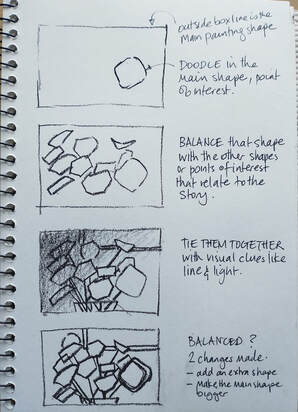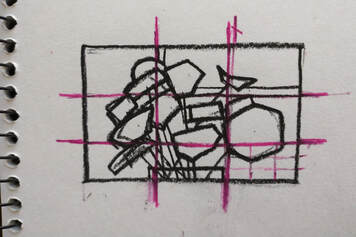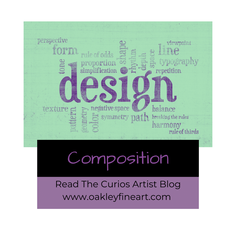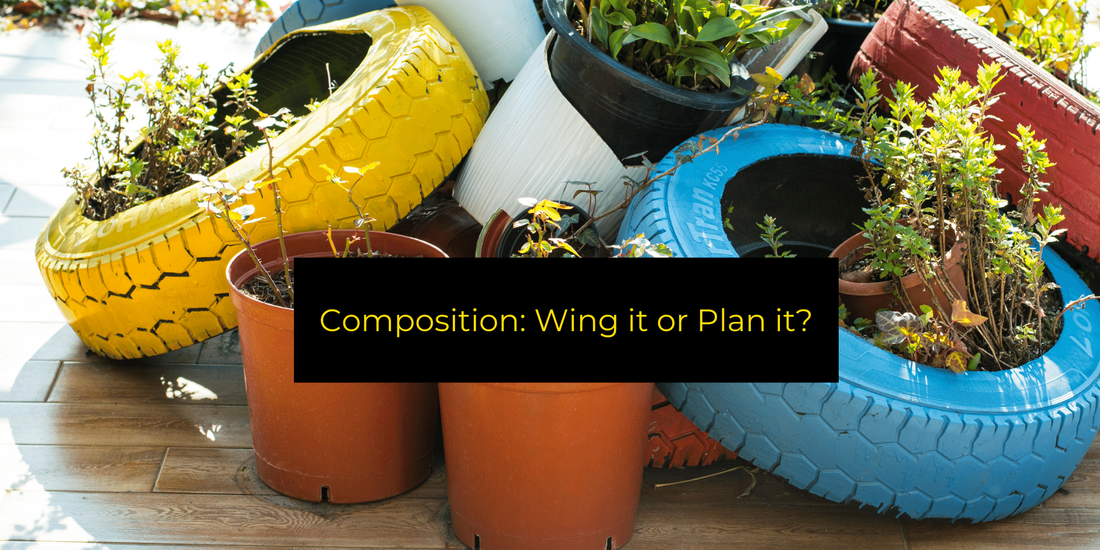 Blog No.6 Composition, made up of balance and design in a painting, are there to help tell the story you wish to share with your viewers. This is done in the artwork deliberately and with thought, so as to lead the viewer through your visual story page by page, which translates as point of interest, by point of interest. If we think of creating a painting in terms of a book layout we can use the analogy of each point of interest being a page. How many pages in your story, how many points of interest, what frequency, how close together or far apart are they, how connected are they, big print pages or small print pages, are they loud or rather quiet? When we design paintings to tell the story, we use the balance of these points of interest or pages in our design. We locate them across the 2-D surface in a path or pattern to take the viewer along the story. Some artists will wing it some artists will plan it. ( the layout of the stories). I tend towards the latter layout of the stories. When I have a photo reference my first question is what do I love about the subject? What drew me to it in the first place? Was it colour, light, texture or symbolism or something else? All are valid reasons when an artist goes 'ooohaahh’ at first sight of a subject. Once that something special is established make a note to yourself about it. Refer back to this so that you're not getting lost or jumping all over the place as you build your story out from this one main point. Use composition aids to guide the placement of other points of interest, or pages of your story, to take the view on that journey. More on that below. Ideally do a sketch in the shape of your painting support's shape. Landscape, portrait, square or however it will be when painted. In the drawing series shown here, the support is a landscape shape. Doodle in shapes to represent your story, keeping in mind your number one love in this story. Make that the star of the page...big and bold with the best placement on the page. Balance that shape with other shapes that relate to the story. Tie them together with visual clues like line & light. Is it balanced? Can you take the viewer through the design using colour, edges, tone, texture etc. There is so much more to explore on the subject. This is food for thought something to get you thinking about your painting design. So what are these compositional aids? The rule of thirds, is the simplest to use. It is about dividing up your painting into nine areas of equal shape and size. I used pink here in the drawing below, to show the thirds along each edge of the 'paper' and then across to intersect making the nine boxes.  Where those boxes touch is an ideal point for placing the story points, your points of interest. Remember only one of these intersecting boxes is the main interest point. The rest lead in and out of the painting to support your main point. Think of them as the cast in your story. Have a play, use this as a guide to see what you can come up with for your next painting. Try doing the doodle with the with the one third lines predawn and fit your shapes to touch them or be in the boxes. Simply divide the top of the paper and the side of the paper into thirds. Copy these across to the other side and join them up. You can see where I miss aligned on one of the third lines on the top of my paper shape. It was crossed out and redrawn. So long as you are happy and satisfied with the balance of the now composed painting that's all that should matter. I go with the feeling of the composition, has it shown off my main point of interest, is it balanced, does the sketch look like a finished painting could be made from this that shows of the one main thing I love about my subject? Happy Painting, Karol
0 Comments
Blog #5 Composition Wing It or Plan It?
It can be argued that a planned composition kills creativity. If we think about this, the artist who wings it, goes straight in and paints. These artists don't think through or plan their composition. Some people call this fluking it, others call it amazing or a true artistry. Consciously they don’t, subconsciously they do think about planning the composition. The ability, the knack of getting a painting balanced and looking right belongs to both an artist who plans, as much as it belongs to a ‘fluked’ result for any other artist. As artists we have a tendency to see, feel, know, what looks right. It is an innate skill. When we take photos we compose through the camera lens. This isn’t a conscious or deliberately thought most of the time, we are not voicing that we are ‘composing that shot’. In saying this, there are some who do, who deliberately do just this. They plan and compose the shot ready for a painting reference. That photo reference is usually copied exactly how it was taken, into a painting. Why? It looks right, and its got all the info needed for a painting. The answer to composition here is to wing it, go with what’s up front, ready to use. Artists with perhaps more experience will take that reference photo and pull it apart. They will do some thumbnails sketches to find the best composition, that tells the story, that shows the viewer what they saw and felt at the moment the photo was taken. The structure of the painting is designed to be balanced, it is composed. Usually small thumbnail size sketches are the method for this sorting out of the design. They are quick and too small to include details. This is planning it. So do you wing it or plan it? How do you go about planning for your painting? There are aids available for composition in the form of apps to use on the camera phone but first of all the artist needs to understand the rules of composition and how they can work. Are you going to do something toward learning more about composition? Best wishes in your painting endeavours, Karol |
The Curious Artist Blog-
talks about everything and anything to do with painting. It's my aim to share techniques, tips, tricks, adventures, products, paintings, educate, inspire and foster the appreciation of painting. I welcome your feedback and questions and don't promise to post regularly, but to let you know when I do post . I'l give it my best shot to answer your questions and if I can't I'll let you know. Gee I may even be able to give you the name of someone who can answer. Either way this blog is about art, artists and everything to do with painting and drawing, being informative, heck maybe even inspiring, all aimed at making painting enjoyable. I sincerely wish you to join me on this adventure. best wishes, Karol AuthorKarol Oakley Archives
February 2023
Categories |
Karol Oakley is a Professional Artist and member of :
The Pastel Society of Australia (PSA)
Australian Guild of realist Artists (AGRA)
National Association of Visual Artists (NAVA)
Pastel Society of Southern California
PROUDLY AUSTRALIAN MADE
Oakley Fine Art is the registered Australian business for Karol Oakley Copyright Protected All Rights Reserved
The Pastel Society of Australia (PSA)
Australian Guild of realist Artists (AGRA)
National Association of Visual Artists (NAVA)
Pastel Society of Southern California
PROUDLY AUSTRALIAN MADE
Oakley Fine Art is the registered Australian business for Karol Oakley Copyright Protected All Rights Reserved
Proudly powered by Weebly



 RSS Feed
RSS Feed